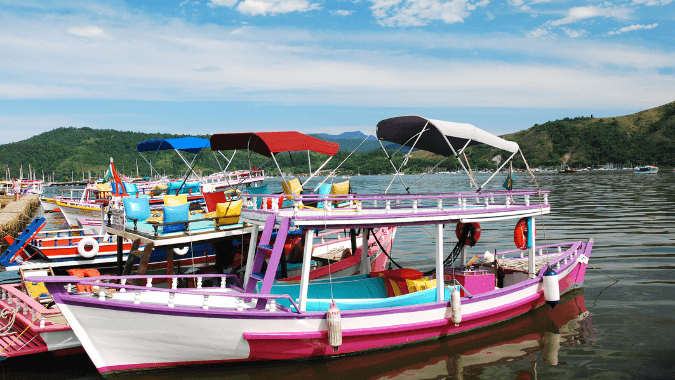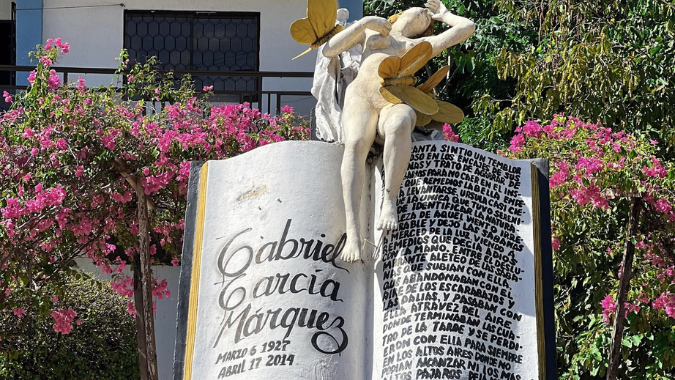Gauchos in Argentina: Cowboys of the Pampas
The gaucho, or Argentine cowboy, is one of the most renowned cultural icons in Argentina, for it represents the Argentinian ideals of freedom and independence and is a symbol of national tradition. Although gauchos in Argentina occupy various different parts of the country, the Pampas is the region where they are most abundant and where gaucho culture first began.
[caption id="attachment_13541" align="aligncenter" width="675"] A gaucho rounding up cattle in the Pampas / source[/caption]
A gaucho rounding up cattle in the Pampas / source[/caption] History of the Argentine Gaucho
Gaucho culture first came about in Argentina during the 16th century, after horses and cattle that had been brought over by Spanish settlers escaped and began breeding at an uncontrollable rate on the plains. This created the need for gauchos to be introduced to manage the vast herds by travelling alone on horseback and rounding up cattle. They would travel determinedly from one herd to the next, surviving on the meat from the animals they caught. As the Spanish territory extended further inland and Argentina gained independence, the Pampas plains were divided up into estancias, meaning the gauchos no longer needed to roam and they began to take up work on the estancias instead.
[caption id="attachment_13545" align="aligncenter" width="675"] An example of a typical Argentinian estancia / Source[/caption]
An example of a typical Argentinian estancia / Source[/caption] Gaucho traditions: clothing, music and food
Nowadays, gauchos in Argentina can be found working with livestock and keeping their traditions alive through their clothing, music and food.
Gaucho clothing
The iconic Gaucho costume consists of woollen ponchos, which double up as saddle blankets and sleeping gear, over loose-fitting pleated trousers known as bombachas. They wear leather boots and hats, and always armed with a leather whip, knife and boleadoras, a throwing weapon made of cord with balls on the ends used to capture running cattle.
[caption id="attachment_13542" align="aligncenter" width="675"] The iconic gaucho costume / Source[/caption]
The iconic gaucho costume / Source[/caption] Typical Gaucho diet
Gauchos essentially live off a diet of meat and maté. Asados, which traditionally consist of slow cooked beef, are an essential part of their culture and are generally accompanied by much wine and dancing. Although the art of preparing an asado is somewhat complex, gauchos tend to use minimal seasoning on the meat, adding just salt and a salsa called chimichurri, which is composed of herbs, garlic, oil and spicy peppers.
Gaucho music
Gaucho music from the Pampas is Argentine folk music that is best associated with guitar, but may also include flute and nostalgic lyrics. The two most common forms of music and dance in gaucho culture are the Chacarera and the Malambo. The Chacarera is a genre of folk music that is seen as the rural equivalent to the Tango and the Malambo is a dance whereby gauchos display their footwork skills and use their boleadoras to follow the beat of the music or the rhythm of the Bombo Drum.
San Antonio de Areco’s Gaucho Tradition Festival
One well-preserved gaucho town in the Pampas is San Antonio de Areco, home to expert craftsmen, and just a few kilometres away from some of the finest and most historical estancias. One of Argentina’s most original festivals is held here, the Fiesta de la Tradición. The actual Día de la Tradición is November 10, which is the birthday of José Hernández who famously wrote Martin Fierro, an epic poem of protest that tells the history of the gauchos' contribution to the national development of Argentina. The celebrations last an entire week, with activities including exhibitions, music, dancing and displays of gaucho skills, but the main events are held on the second weekend. The climax of the festival is the final Sunday, whereby dancing and competitions take place and an asado is cooked around the fire.
[caption id="attachment_13546" align="aligncenter" width="667"] Head down to San Antonio de Areco by car, bus or train from Buenos Aires. Source: Daytours4u[/caption]
Head down to San Antonio de Areco by car, bus or train from Buenos Aires. Source: Daytours4u[/caption] Don’t miss out on your chance to experience Fiesta de la Tradición! Head down to San Antonio de Areco by car, bus or train from Buenos Aires. The festivities start in October, lasting into November.
See more tours and activities in Argentina
By: Milly Day - English Content Manager For: Daytours4u.cm
-
Exciting 4x4 route: São Luís and FortalezafromUS$1,014
-
Vila Gale Mares Resort All InclusivefromUS$100
-
Ecotourism in Chapada DiamantinafromUS$672
-
All inclusive Vila Gelé Cumbuco ResortfromUS$999
-
Full Day Cafayate Tour from SaltafromUS$68
-
Transfer Aeroparque - Buenos AiresfromUS$46
-
-
Transfer Ezeiza - AeroparquefromUS$91
-
-
Excursion to El Chaltén from El CalafatefromUS$153
-
-
-
-
-
-
-
-
-
-
-



